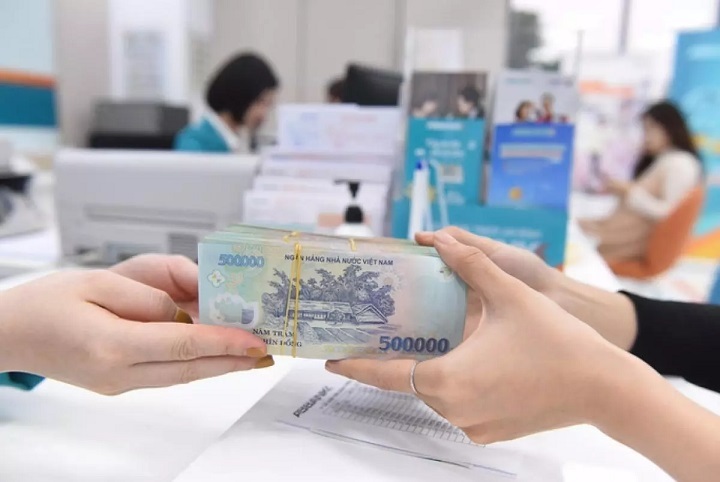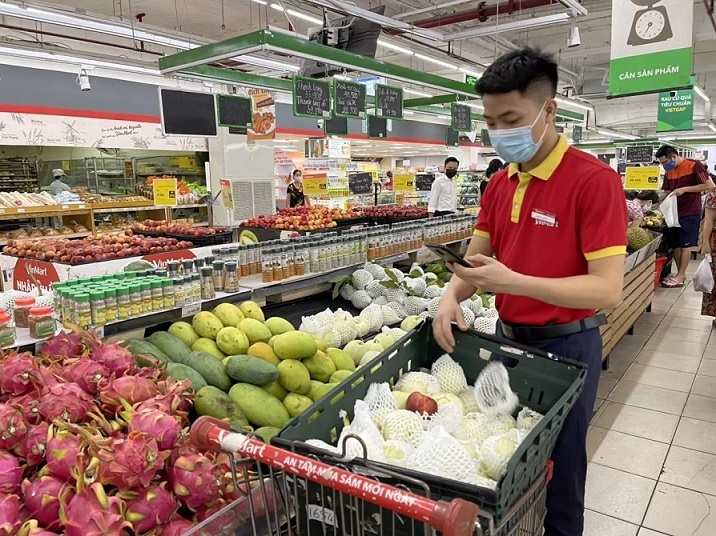Vietnam – Inflation 2022: internal and external pressures
Purchasing power is at a very low level, but the potential pressure on prices combined with external factors may make it increasingly difficult for Vietnamese businesses and people in 2022.
Eurostat has released preliminary data showing that inflation in the Eurozone rose to a record high of 5% in December 2021. This is the highest inflation rate in the past 25 years, since the data was collected.
According to Eurostat, energy prices rose by 26% in 2021 and food prices increased rapidly. The figures show that inflation has become a concern and puts policymakers in a difficult position when European economies are still battered by the Covid-19 pandemic.
There has been a controversy about whether the European Central Bank (ECB) needs to act urgently to prevent inflation or not. This agency is still maintaining interest rates at very low levels to stimulate the economy.
The appearance of the Omicron variant further complicates the situation. With new developments, it is forecasted that the ECB will not raise interest rates until 2023. Inflation becomes a burning issue than ever.
US President Joe Biden also faces price escalation. Consumer prices in the world’s largest economy rose at the fastest rate in nearly 40 years.
Inflation is on the rise in the world. The prices for many types of goods, including inputs such as energy, iron and steel, plastic have increased sharply while Vietnam needs to recover its economy with a large-scale stimulus package.
Production activities in the world and Vietnam have recovered but are still weak due to the impact of the Covid outbreak again along with new strains of viruses such as Omicron. Total supply has not recovered yet, but demand is likely to increase at a faster rate.
After Resolution 128 was issued, Vietnam’s economy prospered. The country’s GDP in the fourth quarter of 2021 regained momentum with an increase of 5.22% after a decline of 6.02% in the third quarter. For the whole year, GDP increased by 2.58%.
With an impressive increase in the fourth quarter, a V-shaped recovery pattern took shape. Like many countries in the world, the resilience of the Vietnamese economy is quite good.
The outlook for the economy is also bright as Vietnam recorded the highest vaccine coverage rate in the world, with up to 99% of the population vaccinated with the first dose and over 92% with the second dose. Along with the new policy of living together in a safe way with the epidemic, Vietnam’s economy is expected to recover quickly.
Resolution 01, which has recently been issued by the Government, sets a growth target of 6-6.5% in 2022 with a focus on speeding up the disbursement of public investment capital and mobilizing all resources to develop the infrastructure system. Optimism is higher after the Government submitted to the National Assembly an economic stimulus package of about VND 350,000 billion.
However, opportunity comes with risk. If supply does not increase in time while demand increases strongly, then high inflation is inevitable.
Vietnam: long-term risk
 |
Compared to other countries, inflation in 2021, was low, only 1.84%. However, a very strong decline in economic growth may put Vietnam in a difficult position and the country may have to pump more money to revive the economy. Inflation risks are clear.
During the recent extraordinary session of the National Assembly, the deputies emphasized the necessity of the support package of the economic recovery program. However, they also warned about inflation risks.
According to the Government’s calculations, the estimated actual value of this fiscal and monetary policy package for socio-economic recovery and development is nearly VND 347,000 billion, about 4.28% of GDP, and the Government has also identified and prepared solutions to control possible risks, especially about increasing inflationary pressure in 2022 and 2023.
However, when the economy gradually recovers, and the pandemic is no longer a big threat, the demand for shopping and consumption will increase again, thereby pushing up aggregate demand. Accordingly, prices will also be pushed up if total supply does not recover in time, especially when the supply chain crisis shows signs of prolonging in 2022.
In Vietnam, in the past two years, fiscal and monetary policies have been strongly mobilized to support the economy. There is not much room to expand support, especially in the banking industry. Meanwhile, bad debt is sharply increasing.
The State Bank of Vietnam recently said that the ratio of bad debt, unresolved debt sold to VAMC, and potential debt that can become bad debt rose to 3.79%. If counting customers’ debt balances restructured according to Circular 01, the ratio of bad debt and debt at risk of turning into bad debt may reach up to 8.2%.
While many countries have had to tighten monetary policy, many central banks have reduced bond purchases and even raised interest rates to prevent a sharp increase in inflation. But Vietnam has entered the phase of “pumping” money into the economy.
Recently, many international organizations have warned Vietnam to avoid further easing monetary policy. Giving support to businesses and employees at a difficult time is necessary, but it needs to be timely and to the right subjects.
The economic stimulus package in 2009 helped the economy overcome the crisis, but it also left consequences. In 2010 Vietnam’s inflation reached 9.2% and in 2011 it was 18.6%.
Experts believe that in 2022, inflation will continue to remain low because production is still below potential. The average economic growth rate of the 2020-2022 period is between 4-5%, much lower than the 6% rate of the 2011-2020 period.
Ha Dung
Source: https://vietnamnet.vn/en/feature/inflation-2022-internal-and-external-pressures-813800.html


 Thailand
Thailand




